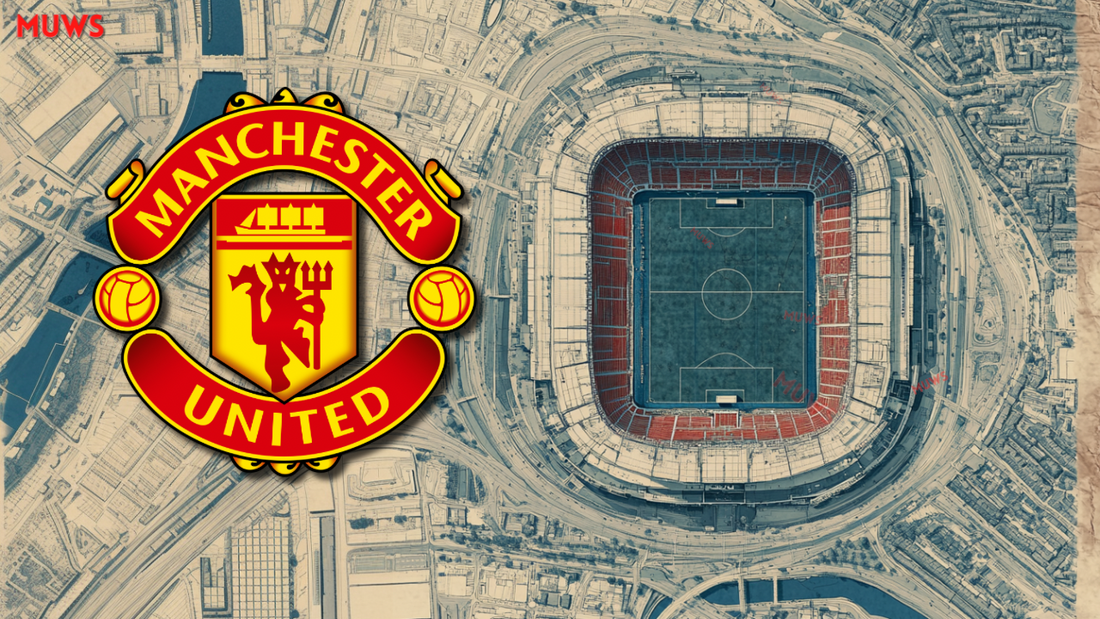
Old Trafford Regeneration: A Landmark Project for Manchester
Share
Manchester United’s plans to build a new 100,000-capacity stadium as the centrepiece of a sweeping regeneration project have gained significant momentum, with support from the UK government and local authorities. The ambitious proposal aims to transform the area around Old Trafford into a thriving hub, promising economic growth and long-term benefits for the region.
United CEO Omar Berrada hailed the announcement as a pivotal moment for both the club and Greater Manchester. “The delivery of a world-class stadium can be the catalyst for major regeneration of an area of Greater Manchester which requires new investment to thrive again,” Berrada stated. He emphasized the importance of collaboration, adding, “We cannot achieve that wider aim on our own, which is why we welcome the announcement by the Chancellor and the ongoing support of the Mayor of Greater Manchester and Trafford Council. If we work together, there is a once-in-a-lifetime opportunity to create a landmark project around Old Trafford that the whole region can be proud of.”
The vision for the project extends beyond just building a stadium. It is part of a larger urban regeneration plan that seeks to revitalise the area surrounding Old Trafford, attracting investment, creating jobs, and boosting the local economy. While the club will fund the stadium itself, the wider development aims to draw interest and financial backing from external sources.
Andy Burnham, Mayor of Greater Manchester, highlighted the transformative potential of the project. “The project around Old Trafford represents the biggest opportunity for urban regeneration this country has seen since London 2012 and is a key part of our 10-year plan to turbocharge growth across Greater Manchester,” Burnham said. The reference to London 2012 underscores the scale of ambition, likening the regeneration to the successful redevelopment of East London following the Olympics.
According to reports from The Daily Mail, Manchester United is expected to demolish the iconic Old Trafford stadium to make way for the new state-of-the-art facility. While the idea of losing the historic venue may be bittersweet for fans, the promise of a cutting-edge stadium and the broader benefits to the community provide a compelling vision for the future.

With backing from Chancellor Rachel Reeves and local leaders, Manchester United’s project could redefine Old Trafford as not just the home of football but as the heart of a rejuvenated Greater Manchester. This landmark initiative demonstrates the power of sport to drive economic and social change, offering hope for a brighter future for the region.
Positives of the Old Trafford Regeneration Project
1. Increased Capacity and Iconic Design
A new or redeveloped stadium could significantly increase capacity, potentially accommodating 100,000 fans and creating an iconic venue, solidifying the club’s global status. Demand for tickets has been steadily increasing in recent years and a larger capacity helps both more fans get to experience match days and will aid in generating more revenue to help the club be more financially sustainable.
2. Economic and Job Creation Opportunities
The wider regeneration of the area, including commercial and residential developments, would provide significant economic benefits, creating jobs for the local community. Melissa Reddy of Sky Sports claimed, “the Old Trafford regeneration project is expected to raise more than £7 billion for the UK economy and create around 90,000 jobs.” This point, whilst a positive for Manchester, is somewhat ironic given Ratcliffe cut over 250 jobs at the club last year as part of the overall cost cutting exercise.
3. Improved Infrastructure and Transport Links
The project promises better transport links, making Old Trafford more accessible and reducing congestion on match days, benefiting fans and residents alike.
4. Boost to Local Community and Urban Renewal
Regenerating Greater Manchester would enhance the quality of life for locals with improved amenities, housing, and commercial opportunities, fostering community pride.
5. Potential Environmental and Sustainability Benefits
A state-of-the-art stadium could incorporate sustainable design elements, such as renewable energy sources and efficient water and waste management systems. With a greater emphasis on ESG (Environmental and Social Governance) reporting now placed on companies in the UK, this will undoubtedly be an area INEOS will be well aware of improving.
Negatives of the Old Trafford Regeneration Project
1. High Costs and Financial Burden
The ambitious ‘Bold Trafford’ option would likely come with an enormous price tag, potentially leading to further debt or even higher ticket prices for fans. It is important the fans do not suffer as a result of the ambition for a new stadium.
2. Impact on Matchday Atmosphere
A modern, larger stadium might lose the historic charm and intimate atmosphere of the current Old Trafford, affecting fan experience. The Theatre of Dreams is steeped in history so to see it neglected and even demolished would be difficult for a large part of the fan base.
3. Community Displacement Risks
Large-scale regeneration projects often risk displacing local residents or small businesses during construction or through rising property prices. Not all residents of the area are happy with the plans for the project and it is vital everyone is consulted.
4. Uncertainty Over Public Funding
Questions about the fairness and transparency of using taxpayer money for infrastructure improvements benefiting a private football club has already led to public backlash.
5. Potential for Delays and Compromises
Such a massive project is susceptible to delays, cost overruns, or watered-down plans, which could frustrate fans and fail to meet expectations. Patience is something Manchester United fans are quickly running out given poor results on the pitch. A prolonged new stadium project may only add to fan frustration so transparency and progress are key.
